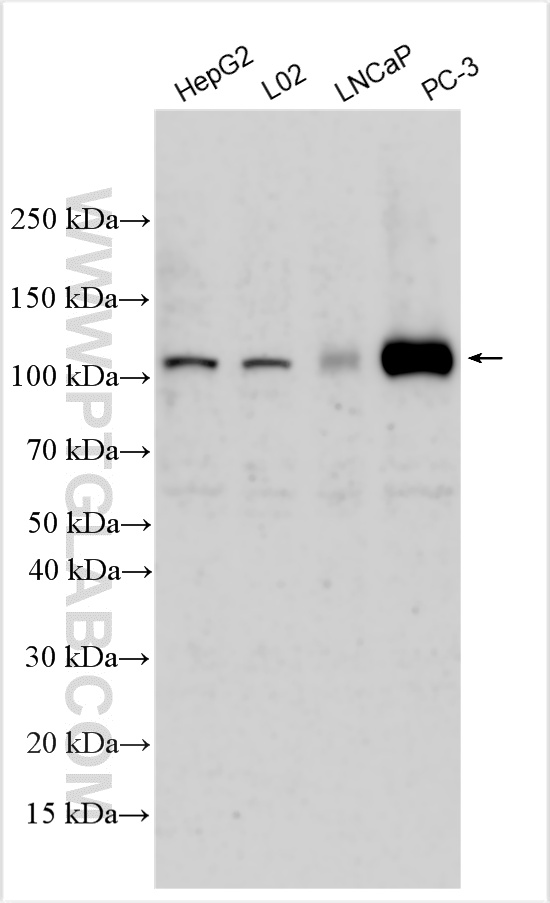验证数据展示
经过测试的应用
| Positive WB detected in | HepG2 cells, L02 cells, LNCaP cells, PC-3 cells |
推荐稀释比
| 应用 | 推荐稀释比 |
|---|---|
| Western Blot (WB) | WB : 1:500-1:1000 |
| It is recommended that this reagent should be titrated in each testing system to obtain optimal results. | |
| Sample-dependent, Check data in validation data gallery. | |
产品信息
31223-1-AP targets RIN2 in WB, ELISA applications and shows reactivity with human samples.
| 经测试应用 | WB, ELISA Application Description |
| 经测试反应性 | human |
| 免疫原 | RIN2 fusion protein Ag35011 种属同源性预测 |
| 宿主/亚型 | Rabbit / IgG |
| 抗体类别 | Polyclonal |
| 产品类型 | Antibody |
| 全称 | Ras and Rab interactor 2 |
| 别名 | Ras and Rab interactor 2, Ras inhibitor JC265, RASSF4 |
| 计算分子量 | 100 kDa |
| 观测分子量 | 100-120 kDa |
| GenBank蛋白编号 | NM_018993 |
| 基因名称 | RIN2 |
| Gene ID (NCBI) | 54453 |
| 偶联类型 | Unconjugated |
| 形式 | Liquid |
| 纯化方式 | Antigen affinity purification |
| UNIPROT ID | Q8WYP3 |
| 储存缓冲液 | PBS with 0.02% sodium azide and 50% glycerol, pH 7.3. |
| 储存条件 | Store at -20°C. Stable for one year after shipment. Aliquoting is unnecessary for -20oC storage. |
背景介绍
RIN2 (Ras and Rab interactor 2), also known as RASSF4. RIN2 is mainly located in Golgi apparatus and participates in the process of material transport and secretion in cells. It is also distributed in cytoplasmic matrix, which may be related to signal transduction in cells. It is highly expressed in the brain, and also in the cerebellum, spinal cord and other nervous system tissues. RIN2 belongs to the family of Ras and Rab exchange factors and has a unique VPS9 domain. It can be used as a nucleotide exchange factor to activate the downstream small GTP enzymes Rab5 and R-Ras, thus starting intracellular signal transduction and regulating cytoskeleton recombination, synapse secretion and cell adhesion. The molecular weight of RIN2 is 100 kDa.
实验方案
| Product Specific Protocols | |
|---|---|
| WB protocol for RIN2 antibody 31223-1-AP | Download protocol |
| Standard Protocols | |
|---|---|
| Click here to view our Standard Protocols |
